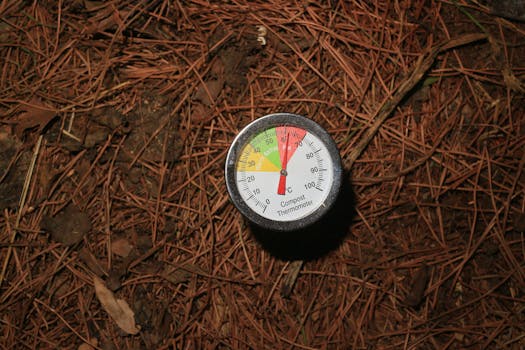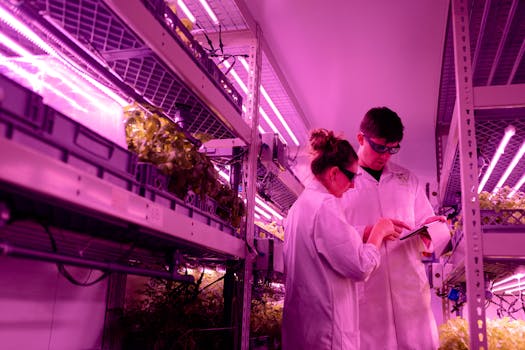Anunțuri
Agriculture analytics is rapidly reshaping the landscape of farming in the United States. With techniques aimed at optimizing productivity and conserving resources, analytics becomes a vital tool for farmers. The integration of advanced technologies offers promising avenues for enhancing crop yield and managing land resources.
As farmers face diverse challenges, such as climate change and economic pressures, agriculture analytics provides actionable insights. These tools transform raw data into knowledge, guiding decisions that impact both farm efficiency and profitability. The rise of big data analytics allows for the exploitation of vast amounts of information, contributing to smarter agricultural practices.
Understanding agricultural analytics not only improves the farming process but also contributes to sustainable practices. By leveraging data-driven strategies, farmers enhance sustainability while meeting increasing food demands. In this article, we will explore the sphere of agriculture analytics and its significance.
Ce este Analiza Agricolă?
Agriculture analytics involves the collection and analysis of data related to farming activities. This practice encompasses various data types, including climatic, soil, and yield-related information. By harnessing this data, farmers can make well-informed decisions that optimize their operations.
Utilizing descriptive and predictive analytics within agriculture helps farmers understand trends and anticipate future events. For instance, farmers can predict when to plant crops based on environmental data, ensuring well-timed efforts. Furthermore, the analysis of soil health can significantly impact the choice and health of crops planted.
Anunțuri
Advanced analytical techniques involve using machine learning and artificial intelligence (AI) to process complex datasets. These technologies identify patterns within the data that may not be immediately visible. As a result, farmers equipped with this information can enhance decision-making, improving overall farm performance.
Cloud computing also plays a crucial role by allowing real-time data access and sharing among stakeholders. Having up-to-date information gives farmers a competitive edge while promoting collaborations among researchers and agricultural experts. As analytics evolves, farmers can benefit more from shared insights and experiences.
Ultimately, agriculture analytics empowers farmers to adapt and thrive in an ever-changing environment. By adopting analytic techniques, they gain a better grasp of their operations, leading to greater success in their businesses.
Anunțuri
The Importance of Data in Agriculture
Data serves as the backbone for effective agriculture analytics. By systematically collecting and analyzing data, farms can turn subjective decisions into objective strategies. This shift to data-driven practices has numerous advantages, including efficiency and adaptability.
Utilizing data helps farmers optimize their resource allocation, meaning they can use water, fertilizers, and labor more efficiently. For example, precision agriculture employs real-time data to apply resources only where needed, preventing waste. This practice reinforces both sustainability and cost savings.
Moreover, data-driven farming minimizes risks, allowing farmers to plan and respond to uncertainties. Weather patterns, market trends, and pest forecasts can now be analyzed before making crucial decisions. When data informs choices, farmers can avoid potential pitfalls that may arise from guesswork.
Farmers also gain insights into customer preferences using data analytics. By understanding trends in consumer behaviors, they can adjust their production accordingly. This market insight leads to improved sales, meeting demand in a more targeted way.
In summary, data is essential for modern agriculture. By integrating comprehensive data analyses, farmers unlock new opportunities and streamline their efforts toward success and sustainability.
Key Components of Agriculture Analytics
Understanding the key components of agriculture analytics is vital for farmers. These elements encompass various tools and technologies that contribute to effective decision-making. Here are some prominent components:
- Sensor Technology: Devices monitor variables like soil moisture and temperature.
- Satellite Imagery: Remote sensing provides extensive information about crop health.
- Data Analytics Software: Applications analyze data, offering actionable insights.
- Geographic Information Systems (GIS): Mapping technologies visualize data spatially.
- Machine Learning Algorithms: Models predict trends using historical data.
Sensor technology plays a critical role, allowing farmers to measure environmental conditions continuously. Gaining insights from these data points enables precise intervention when necessary. For example, moisture sensors can inform irrigation strategies that optimize water usage.
Additionally, satellite imagery enables farmers to monitor large areas, identifying issues like pest infestations or nutrient deficiencies. The use of drones has also proliferated, providing closer inspections of crops in real-time. This capability enhances farmers’ ability to act rapidly on emergent concerns.
Data analytics software compiles and processes information, turning raw data into insights. Many platforms are available, catering to various farming needs, from crop management to livestock monitoring. Farmers can choose software based on their specific focus areas.
Geographic Information Systems (GIS) provide spatial data analysis, giving farmers accurate representations of their land. By visualizing data on maps, farmers can understand patterns more easily, facilitating better resource management decisions. This component enhances strategic planning.
Finally, machine learning algorithms analyze past data to predict future outcomes. By building predictive models, farmers reduce guesswork, increasing the reliability of their forecasting efforts. This aspect of agriculture analytics fosters an adaptive approach to various challenges.
The Role of Technology in Agriculture Analytics
Technology is a driving force behind advancements in agriculture analytics. Technological solutions provide farmers with sophisticated tools that illuminate complex datasets. From real-time monitoring to automated systems, technology enhances productivity.
Precision agriculture is one of the most significant technological innovations in recent years. Implementing GPS technology allows for accurate mapping of fields, ensuring efficient application of inputs like fertilizers and pesticides. This innovation significantly reduces waste and promotes sustainable farming practices.
Remote sensing technologies further extend farmers’ capabilities. High-resolution satellite images and drones collect actionable data about crop conditions. With these insights, farmers gain a comprehensive understanding of crop performance, enabling timely interventions to address issues.
Agriculture software platforms streamline data management for farmers. By aggregating information from various sources, these platforms simplify decision-making processes. Such tools also often come with user-friendly interfaces, making them accessible to farmers with varying levels of tech-savviness.
Additionally, mobile applications empower farmers to access vital data on the go. These apps allow for easy tracking of crop health, weather forecasts, and market prices. By leveraging mobile technology, farmers can make informed decisions anytime, anywhere.
Challenges in Implementing Agriculture Analytics
Despite its advantages, implementing agriculture analytics is not without challenges. Farmers often face various hurdles in adopting data-driven practices. Understanding these challenges fosters better preparedness for addressing them.
Cost is a significant barrier for many farmers. Investing in sophisticated technology and analytics software can be expensive, particularly for small-scale operations. Additionally, the ongoing expenses for data management can strain budgets.
Another concern involves data privacy and security. As farmers collect and share information, they must navigate potential risks regarding data breaches and misuse. Ensuring data security becomes essential to maintaining trust and protecting sensitive information.
Moreover, training and education are crucial for effective implementation. Many farmers may lack experience in data analysis or technology use, which can impede progress. Ongoing training opportunities and resources could mitigate these challenges.
Lastly, data integration remains a complex issue. Farmers must consolidate data from various sources, which may involve diverse formats and systems. Without standardized data practices, it can be challenging for farmers to leverage analytics effectively.
Tendințe viitoare în analiza agriculturii
The future of agriculture analytics promises exciting possibilities as technology continues to evolve. Emerging trends indicate a strong likelihood of more refined practices that will fundamentally change farming approaches. Here are a few trends worth noting:
Artificial intelligence and machine learning will become increasingly predominant in agriculture analytics. These technologies will enhance predictive capabilities, allowing farmers to anticipate issues with greater accuracy. Consequently, data-driven practices will further improve efficiency.
Moreover, increased accessibility to analytics technology is expected. As innovations develop, costs for tools and software may decrease, making them more affordable for smaller farms. This democratization of technology will expand opportunities for all farmers.
Integration with Internet of Things (IoT) devices will transform data collection processes. Sensors and connected devices will become more commonplace, facilitating real-time monitoring of agricultural conditions at a granular level. Farmers will benefit from immediate insights that drive timely decisions.
Sustainability initiatives will bolster the use of analytics in farming. As consumer preferences shift toward eco-friendly products, data-driven approaches will help farmers promote sustainable harvesting practices. Farmers can gain competitive advantages by aligning production with sustainability goals.
Finally, collaborative platforms promoting data sharing among farmers, researchers, and agribusinesses are set to rise. By working together, stakeholders can leverage collective insights, improving overall industry standards and encouraging innovation.
Concluzie
Understanding agriculture analytics is essential for farmers looking to optimize their operations and embrace sustainability. By leveraging data-driven insights, they can make informed decisions that enhance productivity and profitability. Overcoming challenges through technology and training will enable farmers to adapt and thrive in an evolving landscape.
As technology continues to advance, future trends highlight the importance of agricultural analytics. The flexibility offered by data-driven practices will equip farmers to navigate challenges, optimize resource use, and respond to market demands effectively. Through collaboration and innovation, agriculture analytics will empower the next generation of farmers.



